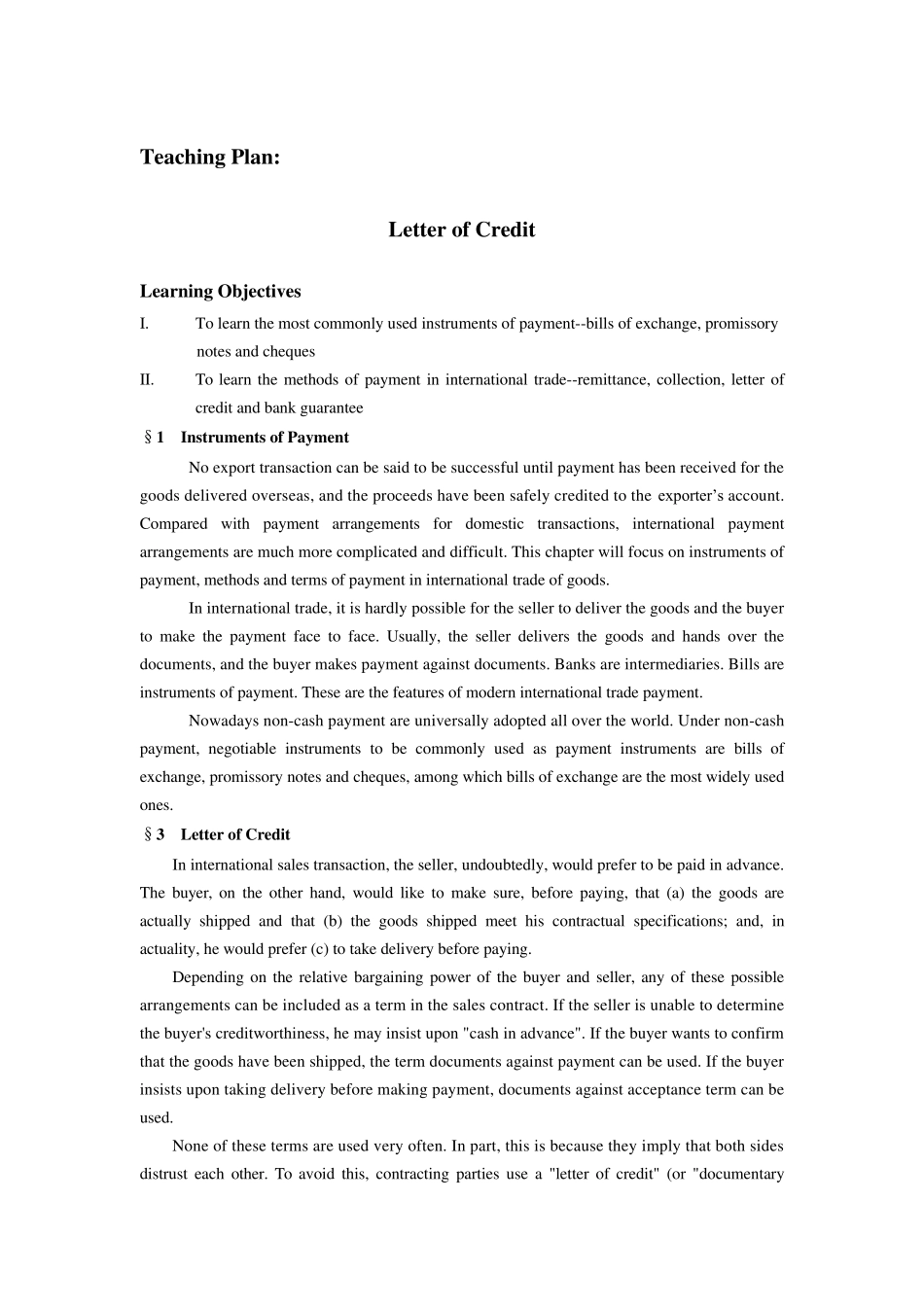Teaching Plan: Letter of Credit Learning Objectives I. To learn the most commonly used instruments of payment--bills of exchange, promissory notes and cheques II. To learn the methods of payment in international trade--remittance, collection, letter of credit and bank guarantee §1 Instruments of Payment No export transaction can be said to be successful until payment has been received for the goods delivered overseas, and the proceeds have been safely credited to the exporter’s account. Compared with payment arrangements for domestic transactions, international payment arrangements are much more complicated and difficult. This chapter will focus on instruments of payment, methods and terms of payment in international trade of goods. In international trade, it is hardly possible for the seller to deliver the goods and the buyer to make the payment face to face. Usually, the seller delivers the goods and hands over the documents, and the buyer makes payment against documents. Banks are intermediaries. Bills are instruments of payment. These are the features of modern international trade payment. Nowadays non-cash payment are universally adopted all over the world. Under non-cash payment, negotiable instruments to be commonly used as payment instruments are bills of exchange, promissory notes and cheques, among which bills of exchange are the most widely used ones. §3 Letter of Credit In international sales transaction, the seller, undoubtedly, would prefer to be paid in advance. The buyer, on the other hand, would like to make sure, before paying, that (a) the goods are actually shipped and that (b) the goods shipped meet his contractual specifications; and, in actuality, he would prefer (c) to take de...


